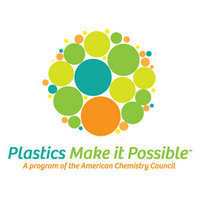Plastics Help 'Drive' Fuel Efficiency and Safety in New Automobiles at the Los Angeles Auto Show
ARLINGTON, Va., December 3, 2009; Plastics have long played an important role in helping to make cars lighter and more fuel efficient, but many consumers may not realize the extent to which plastics have revolutionized the vehicles they drive every day. To communicate how plastics help make possible the modern design, safety, and fuel efficiency of cars, Plastics Make it Possible(SM), an initiative sponsored by the plastics industries of the American Chemistry Council, has partnered with the Green Car Journal to announce the 2010 Green Car of the Year� and conduct the "Green Car Ride & Drive" at the 2009 Los Angeles Auto Show. The show takes place December 4-13 at the Los Angeles Convention Center.
At the Green Car Journal's "Green Car Ride & Drive" event on December 3, Plastics Make it Possible(SM) will demonstrate the important role that plastics play in green vehicle technology. Media have the opportunity to test drive any of the 2010 Green Car of the Year� finalist vehicles, along with additional green concept vehicles such as battery electric cars.
Award-winning automotive expert Lauren Fix, better known as the Car Coach�, will be on hand to highlight the use of plastics in automobiles. Plastics Make it Possible(SM) representatives also will assist media in creating personalized videos of their test drives that can be uploaded to blogs and web sites.
"From seatbelts and airbags that can be life saving in a collision, to structural components that reduce vehicle weight and improve gas mileage - plastics provide a multitude of benefits in almost every aspect of today's automobiles," said Steve Russell, vice president of the Plastics Division at the American Chemistry Council. "We are excited to partner with the Green Car Journal as it honors the 2010 Green Car of the Year� finalists and their innovative green technologies, many of which wouldn't be possible without plastic."
Plastics are playing an increasingly important role in automobile technologies. In fact, plastics make up approximately 50 percent of the total material volume of new cars today(1). And this isn't just in the dashboard or on interior door handles. The lightweight and versatile nature of plastics has allowed automobile engineers to use these innovative materials in key applications such as the engine and vehicle structures, helping to significantly reduce vehicle weight. For every 10 percent reduction in vehicle weight, fuel economy improves 5-7 percent(1). Not only do consumers save money on gas, but greenhouse gas emissions are significantly reduced (depending on a vehicle's gas mileage).
Safety is another area where plastics are making a big difference. Plastics are crucial to a number of safety features including air bags, safety belts, padded bumpers, B pillars and door frames. Plastics also are providing opportunities for vehicle designers to create comfortable, durable and sustainable vehicle interiors - from seats to carpeting to dashboards. Many plastics, including PET (polyethylene terephthalate), are readily recyclable, and many eco-friendly vehicle designers are utilizing recycled PET (e.g., plastic beverage bottles) in interiors and upholstery, allowing plastics to live a second life in automobiles.
When a vehicle has driven its last mile, plastics can help auto manufacturers meet end-of-life recycling and recovery goals. By utilizing recyclable plastics in automotive parts, manufacturers are increasingly able to meet their target goal of recycling at least 85 percent of the material in end-of-life vehicles(2).
For more information on how plastics can help create a cleaner, greener and safer automobile, visit www.plasticsmakeitpossible.com.
About Plastics Make it Possible(SM)
Plastics Make it Possible(SM) highlights the many ways plastics inspire innovations that improve our lives, solve big problems and help us design a safer, more promising future. This initiative is sponsored by the plastics industries of the American Chemistry Council. For more information, visit www.plasticsmakeitpossible.com. For live updates and news from the LA Auto Show, please follow Plastics Make It Possible on Twitter at http://twitter.com/plasticpossible.
The American Chemistry Council (ACC) represents the leading companies engaged in the business of chemistry. ACC members apply the science of chemistry to make innovative products and services that make people's lives better, healthier and safer. ACC is committed to improved environmental, health and safety performance through Responsible Care�, common sense advocacy designed to address major public policy issues, and health and environmental research and product testing. The business of chemistry is a $689 billion enterprise and a key element of the nation's economy. It is one of the nation's largest exporters, accounting for ten cents out of every dollar in U.S. exports. Chemistry companies are among the largest investors in research and development. Safety and security have always been primary concerns of ACC members, and they have intensified their efforts, working closely with government agencies to improve security and to defend against any threat to the nation's critical infrastructure.
(1) Fisher, Michael PhD. "Enhancing Future Automotive Safety With Plastics." Paper Number 17-0451.
(2) Drawn from APC data as cited in "Plastics on the Outside," SAE Automotive Engineering Journal, Aug. 2006, pp. 46-49, at www.aei-online.org, in "Automotive Composites-a Design and Manufacturing Guide," 2nd edition, 2006 and in Chemistry and Light Vehicles, an ACC summary report from Thomas Kevin Swift, 2006.



